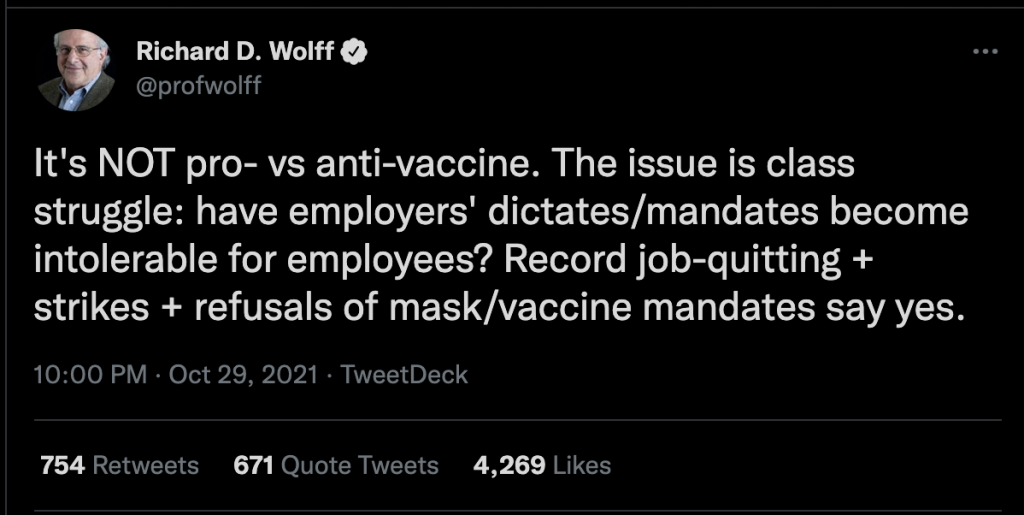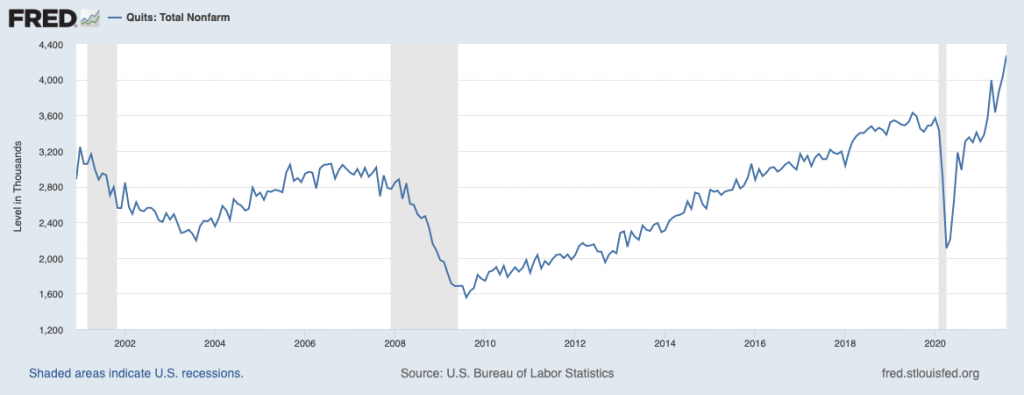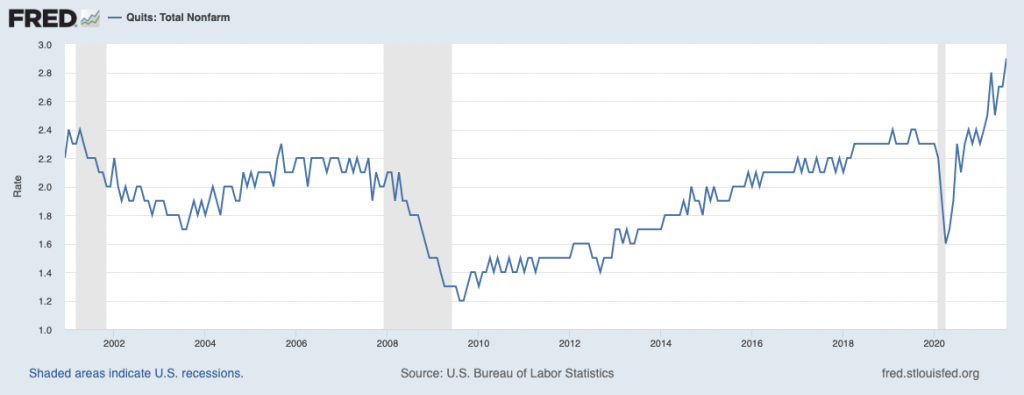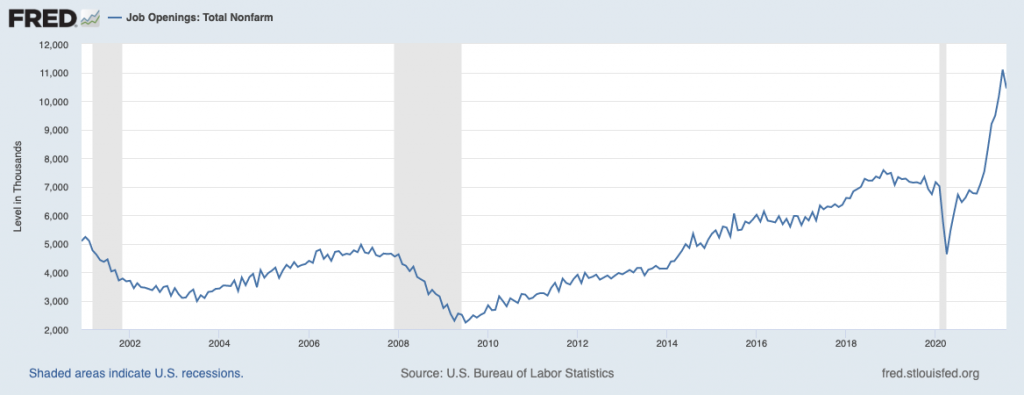Richard Wolff tweeted this out a couple of days ago:

When I saw it, I asked on Twitter whether this was a thing a lot of people were saying, and apparently it is a meme traveling through conservative media and other parts of the discourse that I don’t spend a lot of time reading.
Although you certainly can find news stories here and there about someone quitting due to a vaccine mandate or a small-scale labor protest (such as a slowdown or sickout) due to the vaccine mandate, it is clearly not the case that opposition to the vaccine mandate is driving the much bigger labor market developments.
The real driver is labor market tightness.
Quits
Quit rates and levels tend to move in lockstep with the level of labor market tightness. When the labor market is loose, meaning there are a lot of jobseekers per job opening, such as after a recession, quitting declines. When the labor market is tight, meaning there are not very many jobseekers per job opening, quitting increases.
We can see this relationship clearly in the following two graphs.


The last month reflected in these graphs is August of this year, which was before Joe Biden announced the vaccine mandate in September. There were over 4 million quits in August. In that month, both the quits rate and quits level was the highest on record.
In August, job openings were at the second-highest level on record, with the highest level coming just one month prior.

One reason people might be confused about this is because they think a quit is recorded only when someone quits their job without having another job already in place. But quits are also recorded when someone quits their job to go to another job. When the labor market is tight, you would expect quitting to increase because employers are more likely to poach workers from one another by enticing workers to quit lower-paying jobs and move into higher-paying jobs.
Strikes
Strike data of this sort is harder to come by. The Bureau of Labor Statistics reports work stoppages involving 1,000 or more workers, but it’s not up to date and the 1,000-worker threshold is going to exclude the vast majority of strikes. Based on the data it currently has, we’ve seen 10 such strikes this year, with 9 coming before the Biden vaccine mandate announcement. The strike that occurred after the announcement was the Northwestern Carpenters Union strike, which centered around pay and reimbursement for parking expenses. The strike ended earlier this month with the union winning a $2.26/hr wage increase and a $0.50/hr parking benefit increase.
The BLS list does not yet have the John Deere Strike or the IATSE strike, which are the two big ones currently in progress. Neither of those strikes have anything to do with vaccine mandates.
A more comprehensive list of strikes and labor protests, based on media reports, is maintained by the ILR School at Cornell. That database shows 844 strikes and labor protests this year. Of those, 683 (81 percent) occurred before the Biden vaccine mandate announcement. Of the 163 that occurred after the Biden announcement, only 19 (12 percent) were related to COVID-19 protocols, with the demand in some of the cases being too increase the strictness of COVID-19 protocols, not reduce them.
When thinking about strikes in particular, it’s important to understand how striking generally happens. Unionized workforces typically have collective bargaining agreements (CBAs) that last for around 3 years. During the duration of a CBA, unions don’t strike because they are typically forbidden to strike by a contractual no-strike clause. So strikes only really happen when contracts expire.
The formal strikes we are seeing right now are happening because the workplaces in question have a CBA that is expiring right now and the unions think that striking can help them win a better contract. One reason they might think this is because the aforementioned labor market tightness makes strikes more effective because it makes it harder for employers to find replacement workers.
It’s not even clear yet that we have had an exceptional amount of striking this year, but there is no reason to think that much of the striking activity we have seen is vaccine-related.
Remember Kalecki
In his “The Political Aspects of Full Employment,” Michael Kalecki explained what happens when the labor market gets tight:
The maintenance of full employment would cause social and political changes which would give a new impetus to the opposition of the business leaders. Indeed, under a regime of permanent full employment, the “sack” would cease to play its role as a disciplinary measure. The social position of the boss would be undermined, and the self-assurance and class-consciousness of the working class would grow. Strikes for wage increases and improvements in conditions of work would create political tension.
In this passage, he uses the phrase “full employment,” which has created some confusion over the years, but what he is talking about is a situation in which there are not very many jobseekers per job opening and in which employers are having a hard time filling job vacancies. In that scenario, according to Kalecki, workers become emboldened, and you expect strikes and quits to increase. This is what has happened.